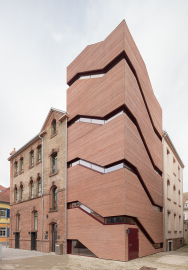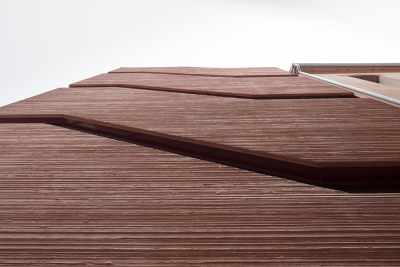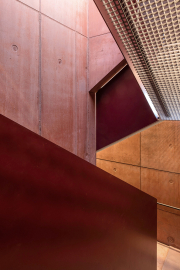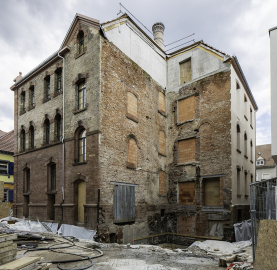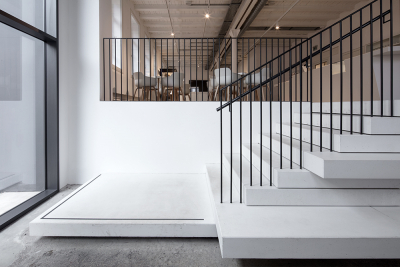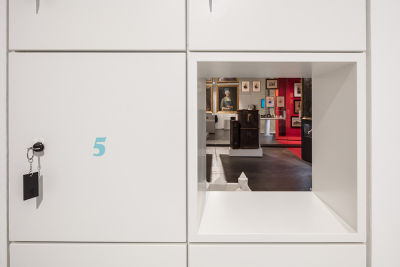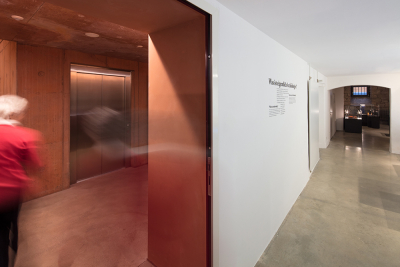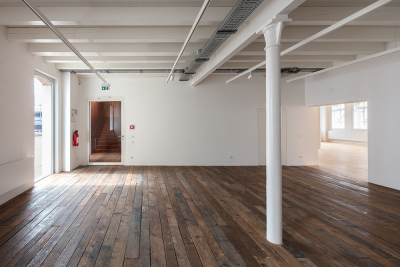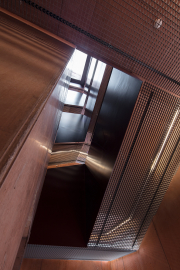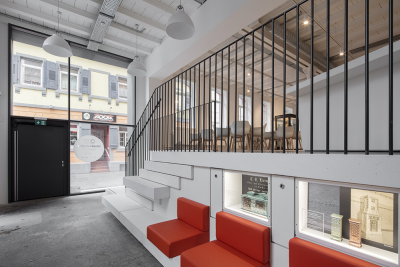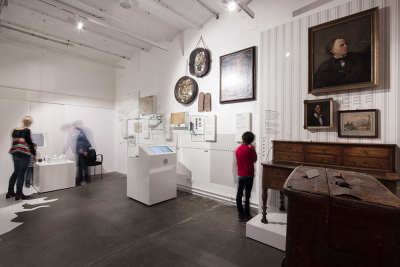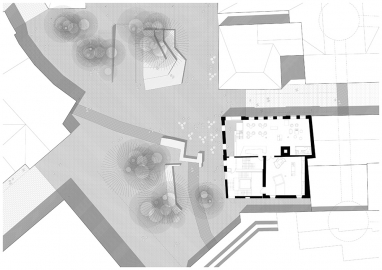Museum Tonofenfabrik
The Tonofenfabrik is situated in the historic centre of Lahr, close to the remains of the medieval castle ‘Storchenturm’ and town wall. In danger of complete deterioration, the listed building has been reinvented as a City Museum utilizing this strategic urban location to create a place that involves visitors with the Lahr’s history and heritage.
The old industrial brick building, a former Clay Oven Factory has not only been transformed into a modern museum, but the somewhat incomplete ‘L’ shaped volume has been completed by a new stair tower forming a coherent ensemble of old and new.
The new stair tower clad in red concrete not only creates a new seamless loop through the exhibition but together with the existing building and its chimney transforms the ensemble into a highly recognisable, iconic presence in the urban space that quickly has become an integral part of the city’s identity
In addition to the presentation of the multi-layered history of Lahr and its inhabitants within the building, the redevelopment of the public space surrounding the museum completes the urban ensemble, finally allowing important historic layers and structures in the centre of Lahr to become legible once more.
The problem for the building was to open up a closed building for public use and introduce a fluid circulation system within an architectural language that looks forward but is comfortable with the 19th century Factory. The design opens the historic gate at the street corner to create a welcoming entrance while expanding the ground floor outwards into the urban plaza, utilizing two newly created openings in the northern façade. This permeable interface between city and building establishes an important destination within the city that is not only a museum but a highly frequented place for local encounter and events.
To continue the connection between the interior and the public realm, the ground floor houses mainly public functions such as foyer, café and small museum shop. Parts of the permanent exhibition are on display in this non-ticketed area, acting as an appetizer to invite people in bringing the city’s history more consciously into the public eye. The stair tower establishes a clear and intuitive circulation that guides the visitor through the exhibition and which is being articulated to the outside in the formal manifestation of the red concrete façade.
Within the museum, two opposite approaches characterise the design: The exhibition areas in the historic industrial building have been restored subtly and restrain to preserve a maximum of the existing fabric and its character. The focus lies on the display of the colourful variety of the artefacts in the exhibition itself, designed by MuseoConsult and Studio Kernland.
With its sinuous combination of pigmented concrete and the sharp metallic geometry of the balustrades and ceilings, the new circulation space continuous the formal language of its outside appearance and creates a spatial experience in contrast to the bright white rooms of the exhibition – a place intentionally designed as a resting point of reduced sensory experience in between the density of the exhibition.
The project has been described as a highly successful combination of Traditional and Modern fulfilling the museum’s mission to collect, preserve and communicate but furthermore to act ss as a repository of knowledge, entertainment machine and platform for participation.

